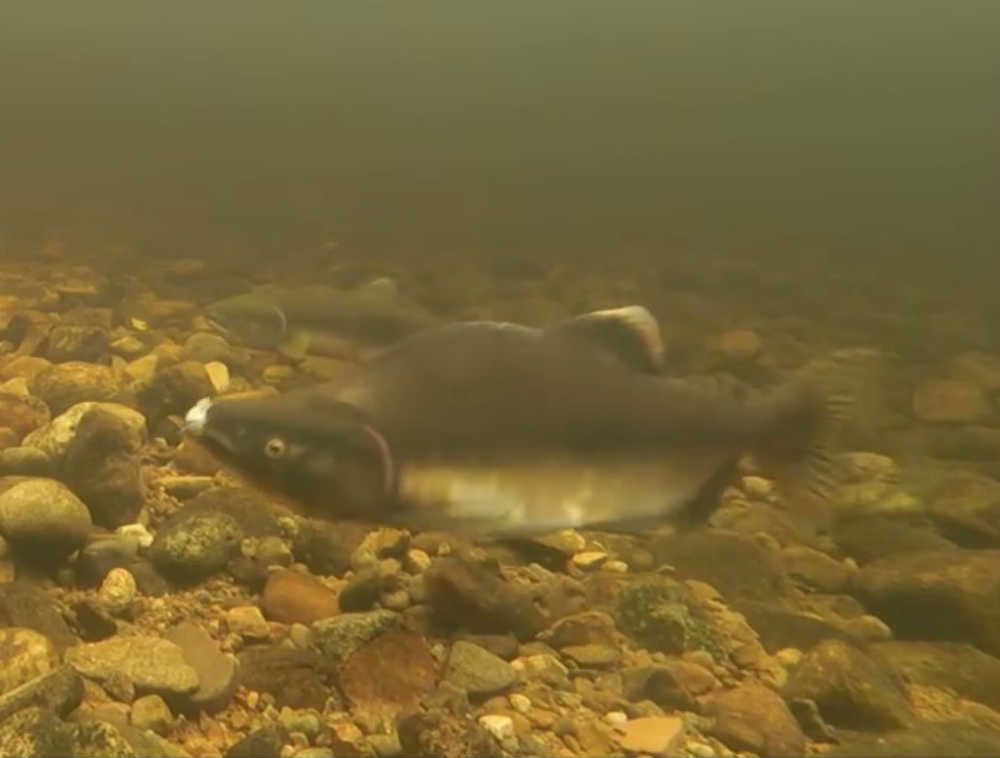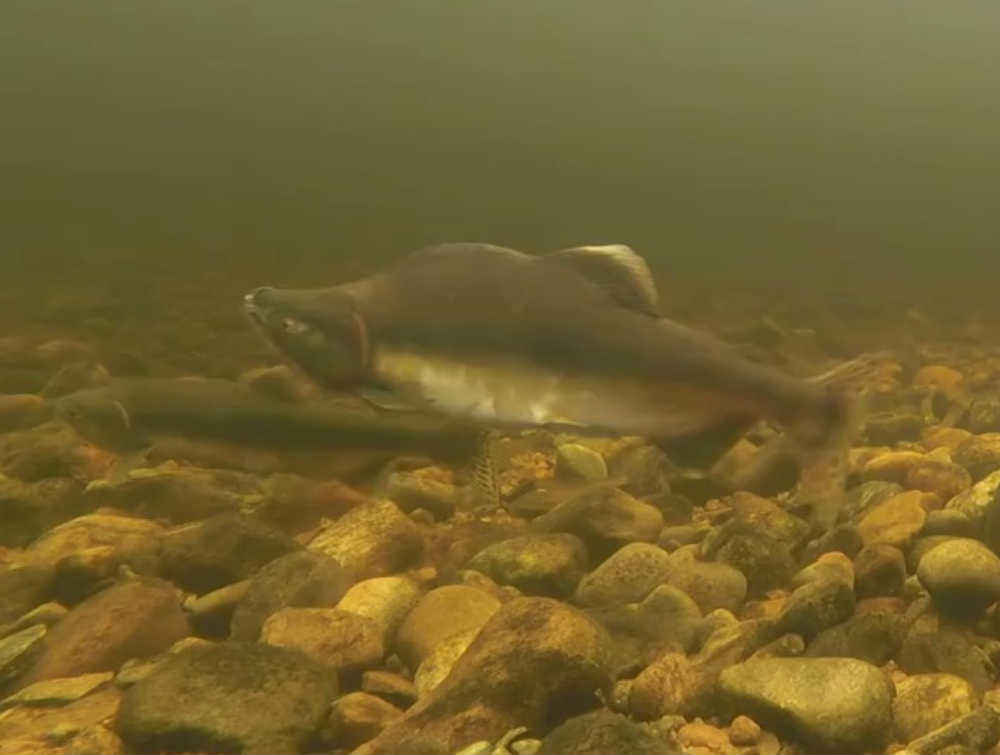AN invading pink salmon has been caught on video for the first time spawning in a Scottish river.
The pink – or humpback – salmon is normally a native to the Pacific Ocean and poses a serious long-term threat to the native Atlantic species.
The pink was filmed in the River Ness, laying its eggs along the water bed.
Filmed using an underwater camera by the Ness Salmon Fishery Board (NSFB), the large salmon, usually found in the colder waters of Canada and Alaska, is seen burrowing into sand and rocks.

The footage of the fish in the River Ness, which flows from Loch Ness and through Inverness in the Highlands, is understood to be first ever showing the breed spawning in UK waters.
The pink salmon, has apparently come from the Norwegian coastline, with recent reports of it having been caught in other salmon rivers including the Dee and Spey.
The clip begins with the female salmon swimming into shot before turing on its side and using its long muscular body to create a pocket in the river bed to drop the eggs.
Another pink salmon is filmed swimming past the camera as the female fish continues trying to lay her eggs.
The offspring of the pink salmon will return to the same place to breed, competing with Atlantic salmon for food.
Director of the NSDF, Chris Conroy said: “We set our cameras out to see if we could record evidence of them actually spawning and we were successful.”
“This is undisputed proof that these non-native fish are attempting to spawn in our waters. We are forwarding this film to Marine Scotland to keep them aware of what is happening.
“It is however important to note that conditions in our rivers mean that the pink
salmon eggs may not go on to successfully hatch – we will monitor the situation over the coming months.
“We don’t know why they are here or whether this is a one-off year for them or,
ominously, a more regular feature.
“While the risks are unknown in terms of their interaction with Atlantic salmon and other Scottish fish, they are unlikely to have a positive impact.”

Salmon and Trout Conservation UK has warned that if the pinks do begin to colonise and breed that would create a ‘major problem’ for native salmon.
Mr Conroy said: “These fish are a different genus from our Atlantic salmon so the
risk of interbreeding is extremely low. But we don’t know the full risks from their
spawning in our rivers.
“They spawn earlier than Atlantic salmon so there is unlikely to be competition for habitat. We understand that pink salmon require much lower water temperatures in which to successfully spawn than are found in most UK waters.
“But the Ness system is unique as Loch Ness regulates water temperatures which
are currently suitable for pinks to spawn.”
Best known for being a favourite prey of North American grizzly bears, they were deliberately introduced to Russian rivers 50 years ago and slowly spread
westwards to colonise northern Norwegian rivers.
The pink salmon has a two year life cycle and they can reach up to two feet in length.
Breeding males can be identified from humps on their back, with females turning a pale grey/pink on side with yellowish-white belly.

